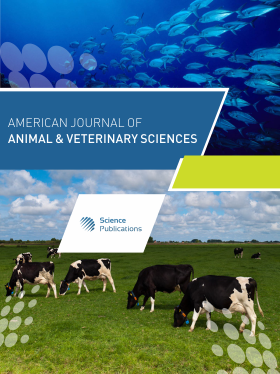Prevalence and Antibiotic-Sensitivity of Methicillin-Resistant Staphylococcus aureus (MRSA) in Pyogenic Skin Affections of Animals and Human
- 1 Assiut University, Egypt
- 2 El Wadi El Gadid University, Egypt
Abstract
MRSA infections commonly present as skin and soft tissue infections in man and animals. Treatment usually includes opening of abscess and drainage with or without antibiotic therapy. MRSA is usually resistant to certain antibiotics including methicillin, oxacillin, penicillin and ampicillin. Therefore, the aim of the present study was to investigate the prevalence of MRSA in man and animals with suppurative skin affections in Assiut Governorate and to test the phenotypic and genotypic antibiotic susceptibility of the isolated MRSA strains to the commonly-used antibiotics in Egyptian medical practices. MRSA were detected in 3.0% of tested sheep and goat, 27.3% of equines, 7.7% of cows and in 14.3% of tested humans in the same area. All animal and man MRSA strains were positive to erm(A), TetK and TetM genes, but erm(C) gene could only be detected in 80% of human MRSA isolates. human and animal MRSA isolates were resistant to penicillin and ampicillin antibiotics with MIC ranging from 8 to 128 µg/ml. Sheep and cow MRSA isolates were resistant to oxytetracycline, while equine isolates were sensitive to it. About 44.4% of human isolates were resistant to oxytetracycline. All animal-derived MRSA isolates were resistant to cefixime and more than of 55% of human isolates were also resistant to the same drug. All MRSA isolates were sensitive to clindamycin except for strains isolated from cows. Enerofloxacin and ciprofloxacin were the most effective antibiotics against all MRSA isolates. None of the 16 MRSA isolates had reduced susceptibility to vancomycin with MICs laying in the 0.5-4 µg/mL range. The similarity in phenotypic and genotypic antibiotic susceptibility of MRSA isolates recovered from both humans and animal cases, despite the difference in the frequently used antibiotics in veterinary and human hospitals, suggesting the possibility of zoonotic circulation of those isolates between them.
DOI: https://doi.org/10.3844/ajavsp.2019.57.68

- 3,818 Views
- 2,833 Downloads
- 0 Citations
Download
Keywords
- MRSA
- Egypt
- Zoonosis
- Antibiotic Resistance Genes
- Antimicrobial Sensitivity
